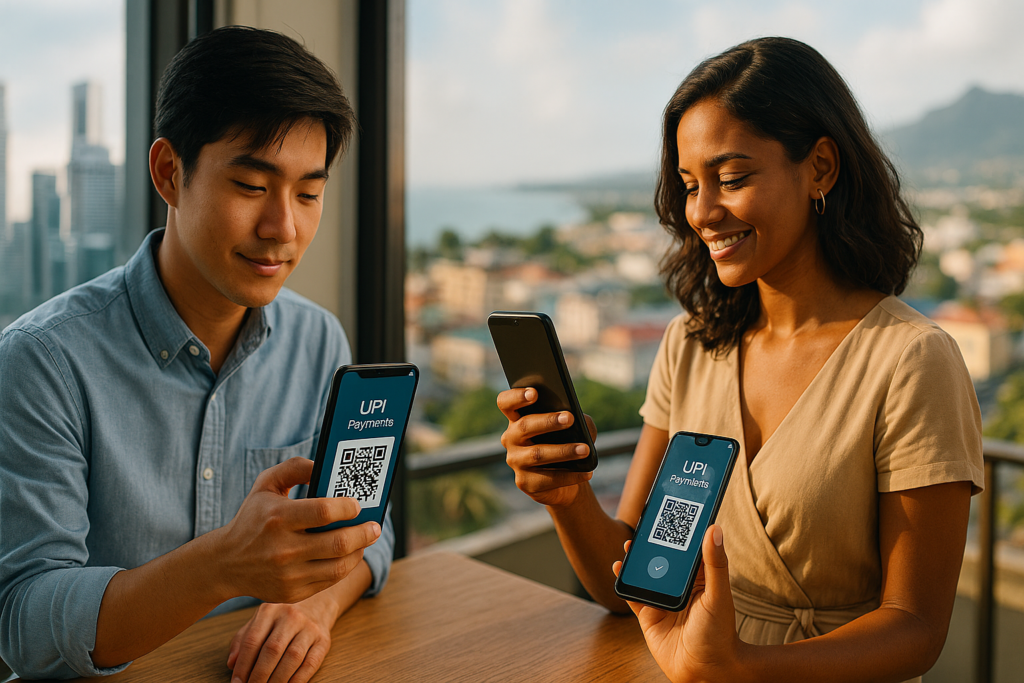In recent years, the landscape of digital payments has undergone a remarkable transformation. One of the most notable developments is the expansion of Unified Payments Interface (UPI) beyond India’s borders. This shift is paving the way for seamless, instant cross-border transactions using QR codes—making international payments faster, more secure, and more accessible than ever before. From Singapore to Mauritius, countries are embracing the power of cross-border UPI, creating new opportunities for businesses and consumers alike.
Understanding Cross-Border UPI
UPI, launched by the Reserve Bank of India (RBI), revolutionized Indian digital payments by enabling instant money transfers via a simple QR code or mobile number. Traditionally used within India, UPI soon began expanding its horizons. Cross-border UPI allows users in one country to send or receive money from users in another, leveraging a shared QR code or UPI ID. This simplifies international transactions significantly, removing the need for bank transfers, SWIFT codes, or currency conversions at traditional banks.
The Expansion: Singapore and Mauritius Lead the Way
Singapore and Mauritius have taken the lead in adopting cross-border UPI, driven by regional economic ties and the growing demand for convenient international payments. Singapore, a global financial hub with a high smartphone penetration, has partnered with Indian payment providers to enable residents and businesses to transact easily with India using QR codes.
Mauritius, often seen as a gateway into African markets, has also integrated cross-border UPI to facilitate trade, tourism, and remittances. This move is expected to boost these sectors by offering a quick and secure payment method that aligns with the preferences of digital-savvy users.
How Cross-Border UPI Works
The process is straightforward and similar to domestic QR payments:
- User A in Singapore wants to pay User B in Mauritius.
- Both users need compatible UPI apps linked to their bank accounts in their respective countries.
- The payer scans a QR code or enters the recipient’s UPI ID.
- The transaction is authenticated with a PIN or biometric.
- Funds transfer instantly, often within seconds, across borders.
This simplicity makes cross-border UPI highly appealing for small businesses, freelancers, tourists, and diaspora communities. It reduces reliance on cash or cumbersome bank transfers, offering a more fluid, real-time experience.
Legal and Regulatory Framework
Implementing cross-border UPI requires cooperation among regulators, banks, and payment providers. Countries like India, Singapore, and Mauritius have established bilateral agreements to govern these transactions, ensuring compliance with anti-money laundering (AML) and know-your-customer (KYC) standards.
The Reserve Bank of India has been proactive in encouraging interoperable payment systems, promoting the adoption of cross-border QR codes through memoranda of understanding (MOUs). Similarly, the Monetary Authority of Singapore and Mauritius have set up frameworks to facilitate seamless transactions, aligning their regulations with international standards.
Benefits of International QR Payments via UPI
- Speed and Convenience: Transactions are completed instantly, reducing delays associated with traditional methods.
- Cost Savings: Lower fees compared to wire transfers or currency conversions, making it more affordable for end-users.
- Enhanced Security: Encrypted QR codes and biometric authentication reduce fraudulent activities.
- Financial Inclusion: Accessible via smartphones and simple apps, boosting digital inclusion in emerging markets.
- Supports Tourism and Trade: Easier payments encourage more cross-border transactions, benefitting local economies.
Challenges and Considerations
Despite its advantages, cross-border UPI faces hurdles:
- Regulatory Divergences: Different countries have varying laws on data privacy, AML, and KYC compliance.
- Currency Fluctuations: Managing real-time exchange rates can be complex.
- Interoperability: Ensuring compatibility across diverse banking platforms requires ongoing collaboration.
- Cybersecurity Concerns: Protecting against fraud and hacking remains a priority.
Addressing these issues will be essential to mainstreaming cross-border QR payments worldwide.
Future Outlook
The future of international QR payments appears promising. As more countries adopt UPI-like systems and foster regional collaborations, we can expect broader acceptance of cross-border QR codes. This trend aligns with the global push for faster, cheaper, and more inclusive digital finance options.
Moreover, innovations such as integrating cryptocurrency payments, enhancing AI-driven fraud detection, and expanding QR code functionalities will reinforce trust and usability. Countries like the UAE, Southeast Asian nations, and parts of Africa are already exploring similar integrations, indicating a bright future for cross-border UPI initiatives.
FAQs
1. Is cross-border UPI available for individual users or only for businesses?
Initially, cross-border UPI primarily targets individual users; however, businesses can leverage these systems for international trade and remittances as adoption grows.
2. Are there any fees associated with cross-border QR transactions?
Fees vary depending on the banks and countries involved. Generally, these transactions are cheaper than traditional wire transfers, but users should check with their banks for specific charges.
3. How secure are cross-border QR payments?
They are designed with strong encryption, biometric authentication, and secure protocols, making them quite secure when used with trusted apps and networks.
4. Can I use my existing UPI app for international QR payments?
Most UPI apps are designed for domestic use within India. Cross-border payments often require compatible apps or partnerships with international payment providers. Check with your bank or app provider for availability.
5. What are the best countries to explore cross-border UPI travel benefits?
India has led the way, with countries like Singapore, Mauritius, the UAE, and parts of Southeast Asia actively expanding cross-border UPI initiatives to promote seamless payments for tourists and expatriates.
If you’re interested in exploring more about innovative digital payment methods or want to compare credit card offers that support global transactions, visit our homepage or check out our blog.
As cross-border UPI continues to grow, it promises to make international finances more integrated and convenient. Staying informed about these developments can help you make smarter financial decisions and leverage new payment opportunities across borders.

